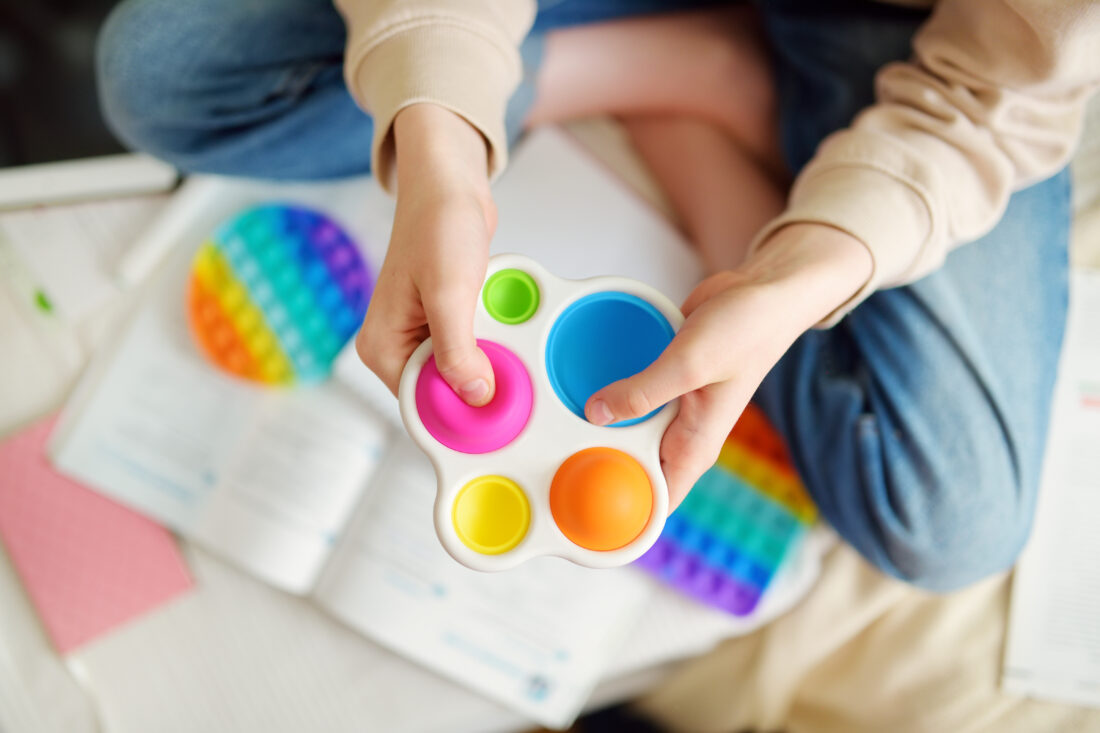In recent years, fidget toys like fidget spinners and fidget cubes have become incredibly popular, especially among children. Although initially perceived as mere distractions, fidget toys have evolved into tools that offer some benefits. Now, they’re marketed as fun gadgets and stress relievers. However, behind the hype are some hidden, genuine benefits that high-quality fidget toys can provide for kids. When chosen appropriately, these toys are far more than just a passing craze.

Keep reading and take a closer look at how fidget toys can benefit children.
- Focus And Attention
Fidget toys can be surprisingly helpful for improving focus and attention in children. The toys provide a positive outlet for excess energy and nervous habits. Fiddling with a tactile toy helps occupy the child’s hands and mind with a neutral activity. This allows them to direct their energy into something that does not disrupt or distract from the task at hand.
So, if you want to improve your child’s attention and focus, you can buy fidget toys to keep their hands occupied. For instance, if your child tends to tap their fingers, shake their legs, or engage in other distracting toys, a fidget toy gives an alternative activity to channel that energy into. Having an object to keep their hands busy enables them to sit still, listen attentively, and concentrate for longer periods.
- Anxiety And Stress Relief
In addition to aiding concentration, quality fidget toys can provide a measure of anxiety and stress relief for children. Particularly in pressured situations like testing, a fidget toy’s calming, repetitive physical manipulation can soothe and relax kids. Therapeutic putties, textured rings, and other tactile toys allow children to work off nervous energy and tension in a subtle, non-disruptive way.
Without the stigma of more conspicuous stress balls and toys, fidget objects give kids a discreet but effective outlet for anxiety. Furthermore, the usage requires minimal focus, which enables them to keep most of their attention where it is needed. In moderation, fidget toys can be self-soothing tools to relax children’s minds and bodies.
- Motor Skill Development
The hands-on manipulation of fidget toys engages and enhances children’s fine motor skills. The simple, repetitive movements involved in maneuvering the toys build dexterity in the fingers and hands.
Rotating a fidget spinner, clicking a fidget cube, or molding putty and anti-stress balls helps strengthen hand-eye coordination and fine motor control. When used properly alongside instruction and supervision, fidget objects can aid in developing and practicing crucial motor skills. They provide an engaging and motivating way for children to hone fine finger and hand movements.
- Self-Regulation
For children with conditions like ADHD, autism, or sensory processing disorders, fidget toys can facilitate self-regulation of behavior and impulses. The toys give an appropriate sensory outlet to expend restless energy. By redirecting urges to fiddle or fidget onto positive objects, children gain more control over unwanted behaviors. Having a tactile tool to manage impulses promotes more composed, self-disciplined conduct.
Furthermore, fidget toys are also a healthier oral substitute for kids who have a habit of chewing on pens, nails, sleeves, etc. Providing something appropriate to occupy mouths and hands promotes better self-restraint and regulation in children.
- Mindfulness And Focus
Simple fidget toys like marble mazes require concentration and mindfulness to manipulate. Guiding a marble through a maze, puzzle, or labyrinth demands focused attention in the present moment. This can help minimize distractions and wandering thoughts. The activity engages sensory channels and mental focus in an immediate, concrete way.
As long as they are used in moderation alongside instruction, these more engaging fidget toys can aid children in practicing mindfulness and single-task focus. The objects occupy both hands and minds, training them for more attentive awareness.
- Creativity And Expression
Certain creative fidget toys allow children to express imagination and creativity while keeping their hands occupied. For instance, mini zen gardens, water beads, and moldable/shapeable putties spark open-ended play and invention. As opposed to repetitive spinners, these toys have no right or wrong way to be manipulated. Kids are free to creatively fidget and experiment at their own pace.
The tactile experience also engages visual, auditory, and sensory channels while promoting creative thinking. Allowing artistic fidget toys into instruction gives children constructive outlets for creativity within structure and supervision.
Wrap Up
When chosen with care, supervised properly, and used in moderation, fidget toys can provide real developmental, therapeutic, and educational benefits to children. The key is choosing age-appropriate toys that provide engaging sensory input without becoming too distracting or disruptive. So, the next time you see a child fidgeting with a toy, remember that there is more to it than meets the eye. Embrace the surprising benefits of fidget toys and let them spin, twist, and twirl their way to improved focus and overall growth.




